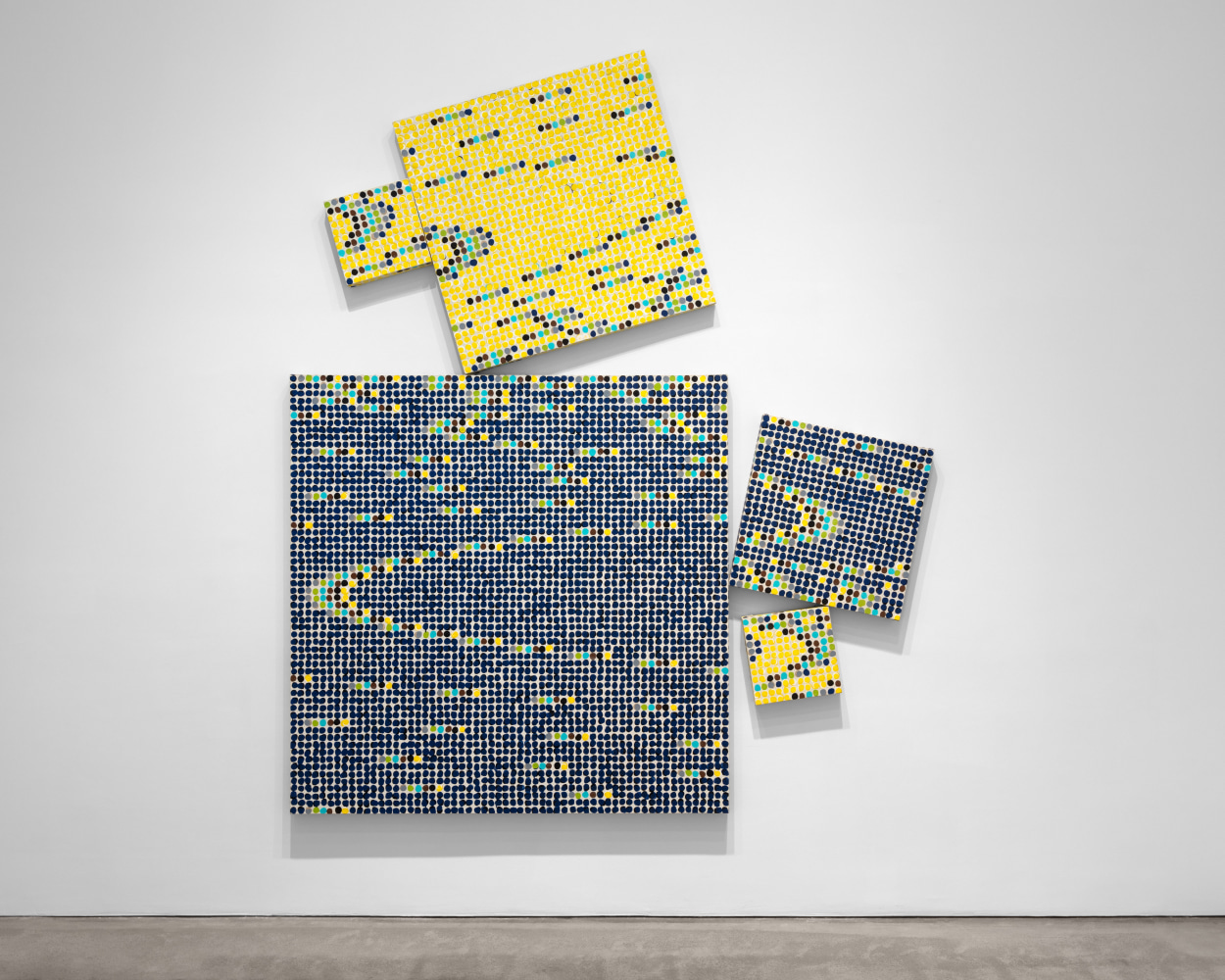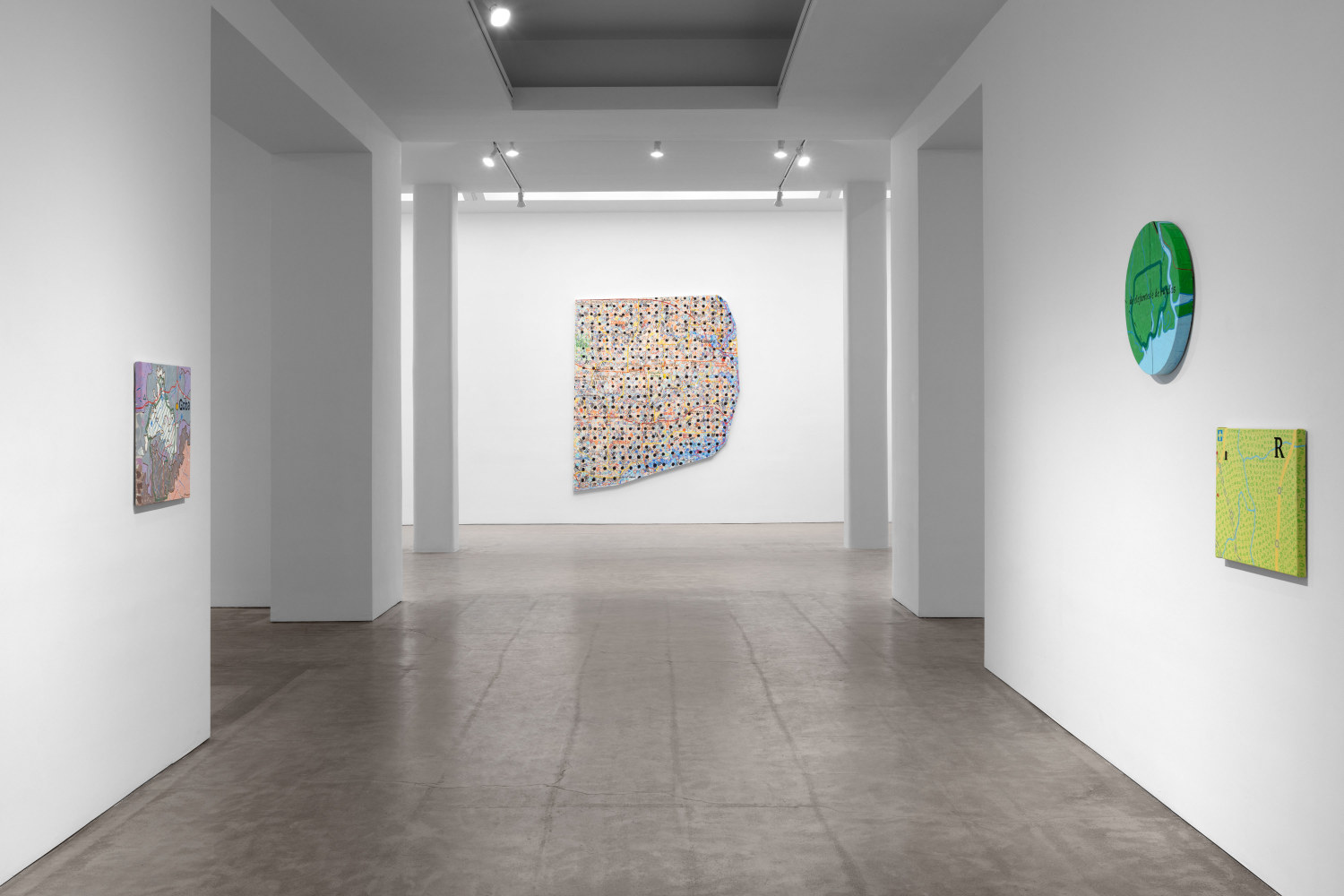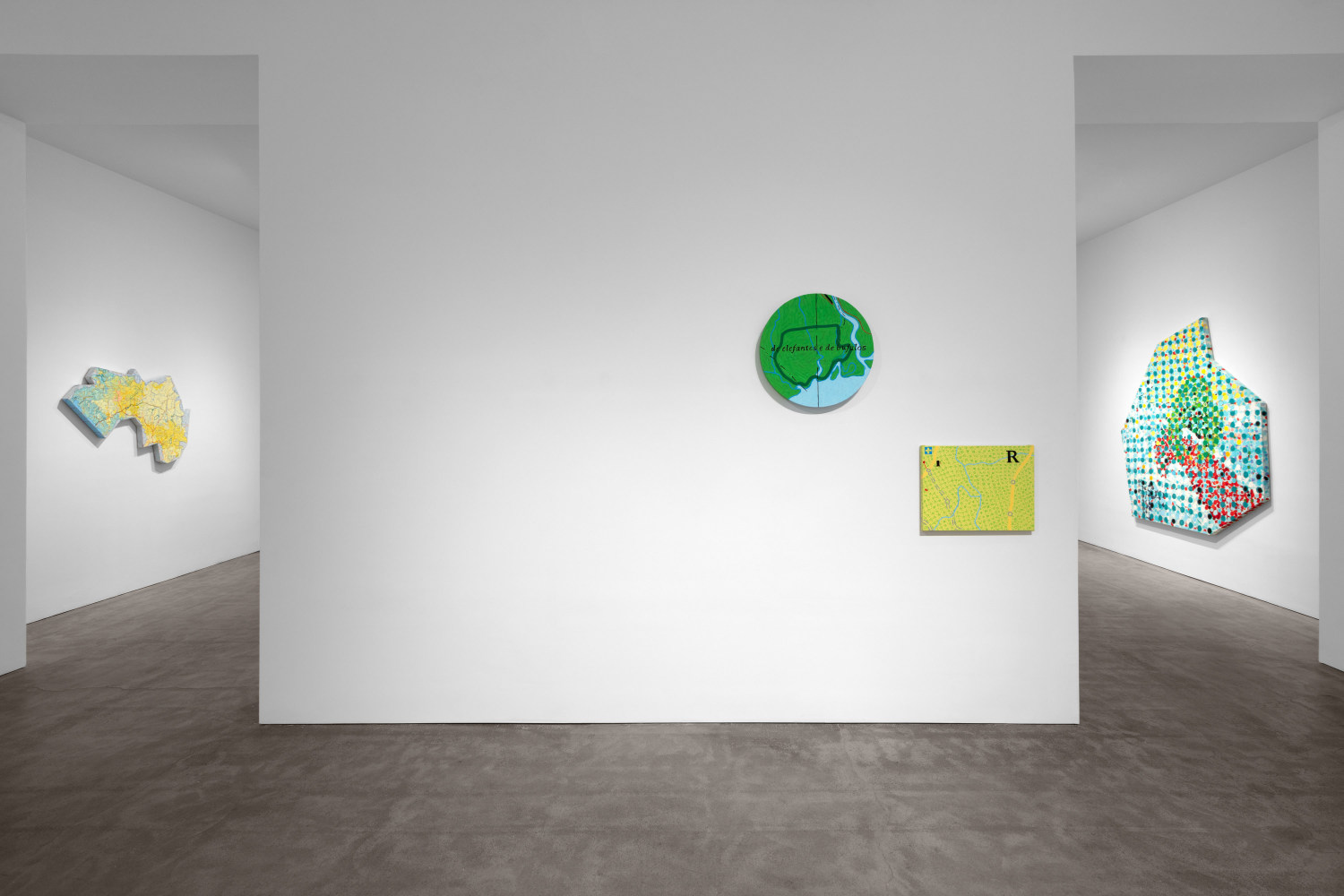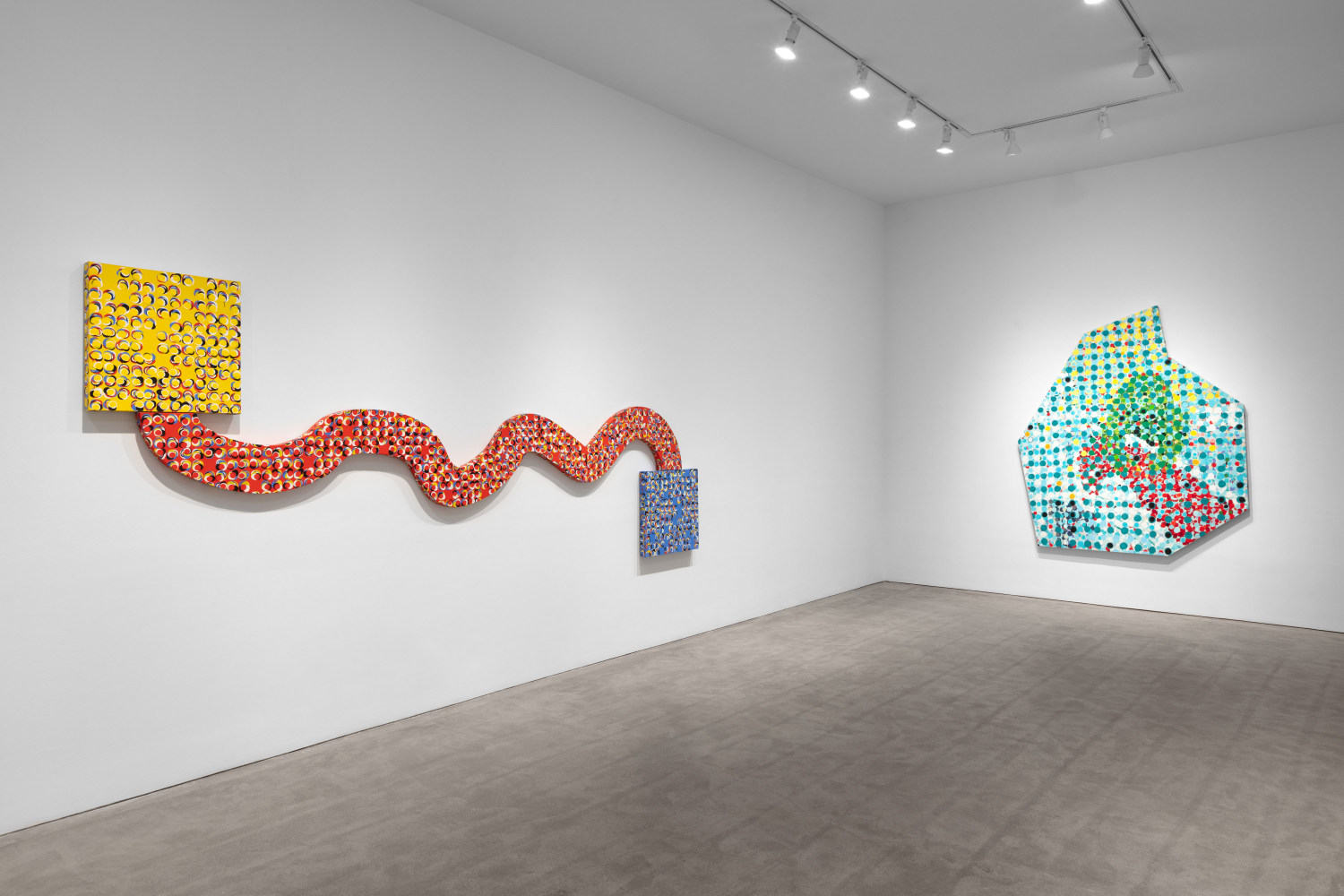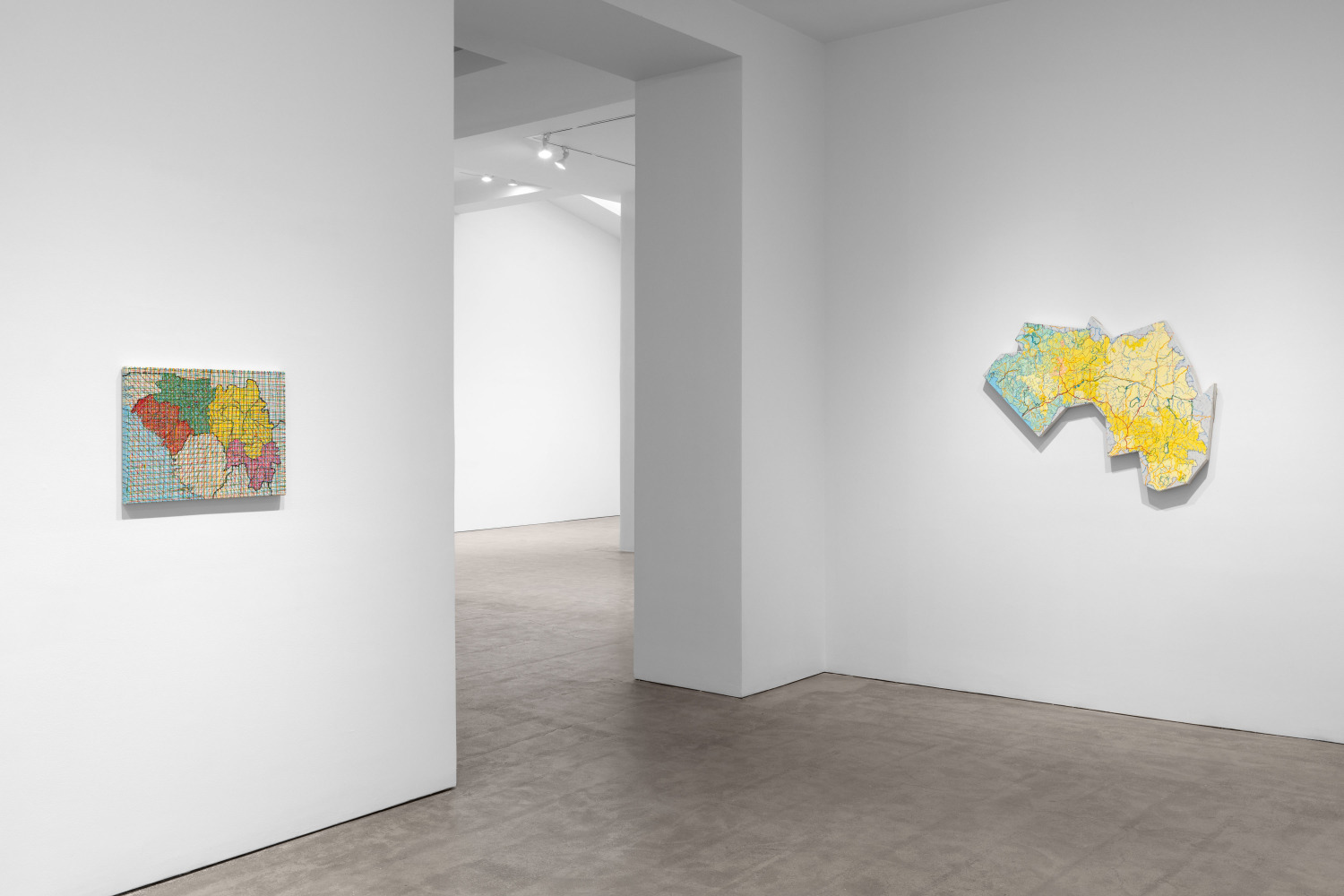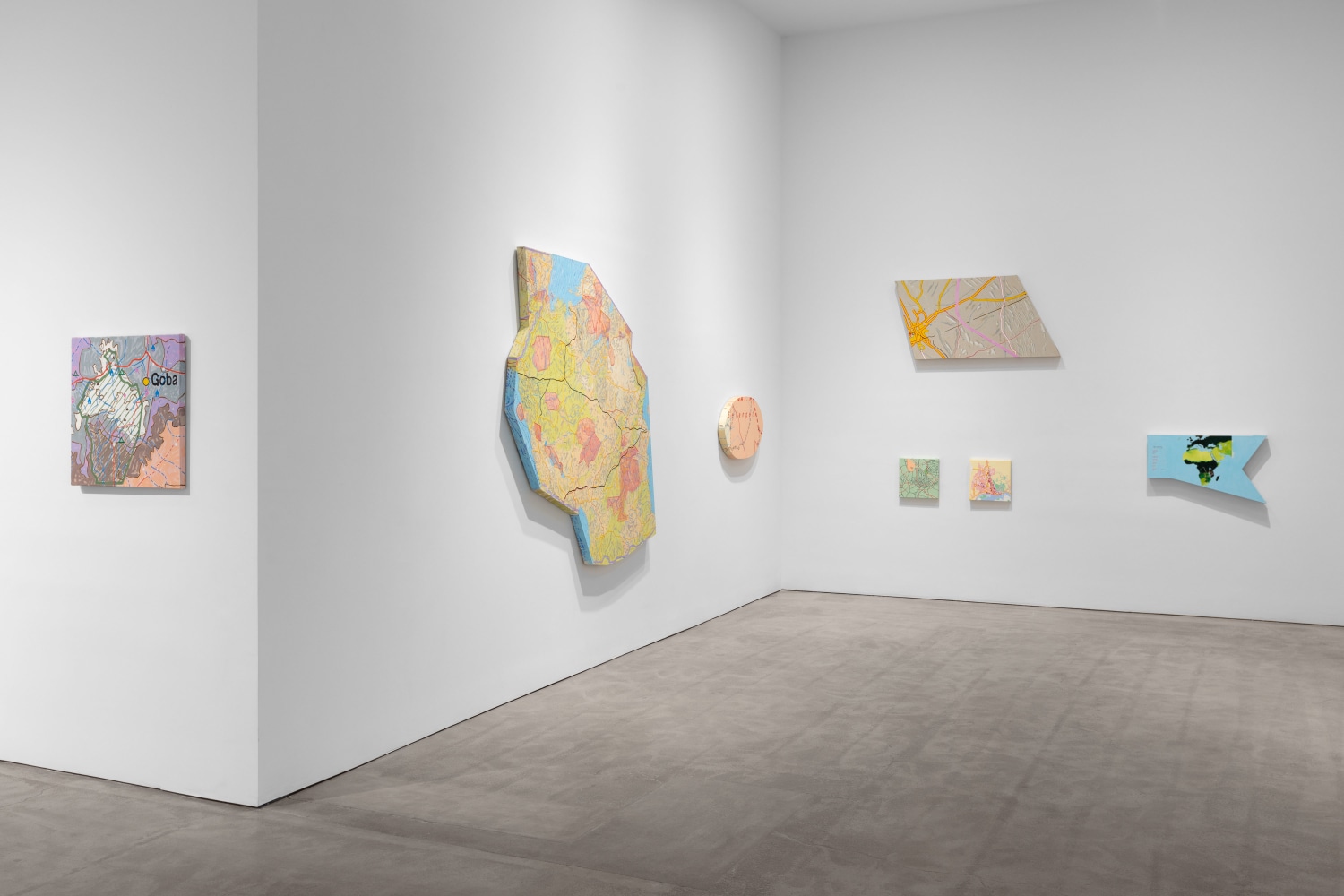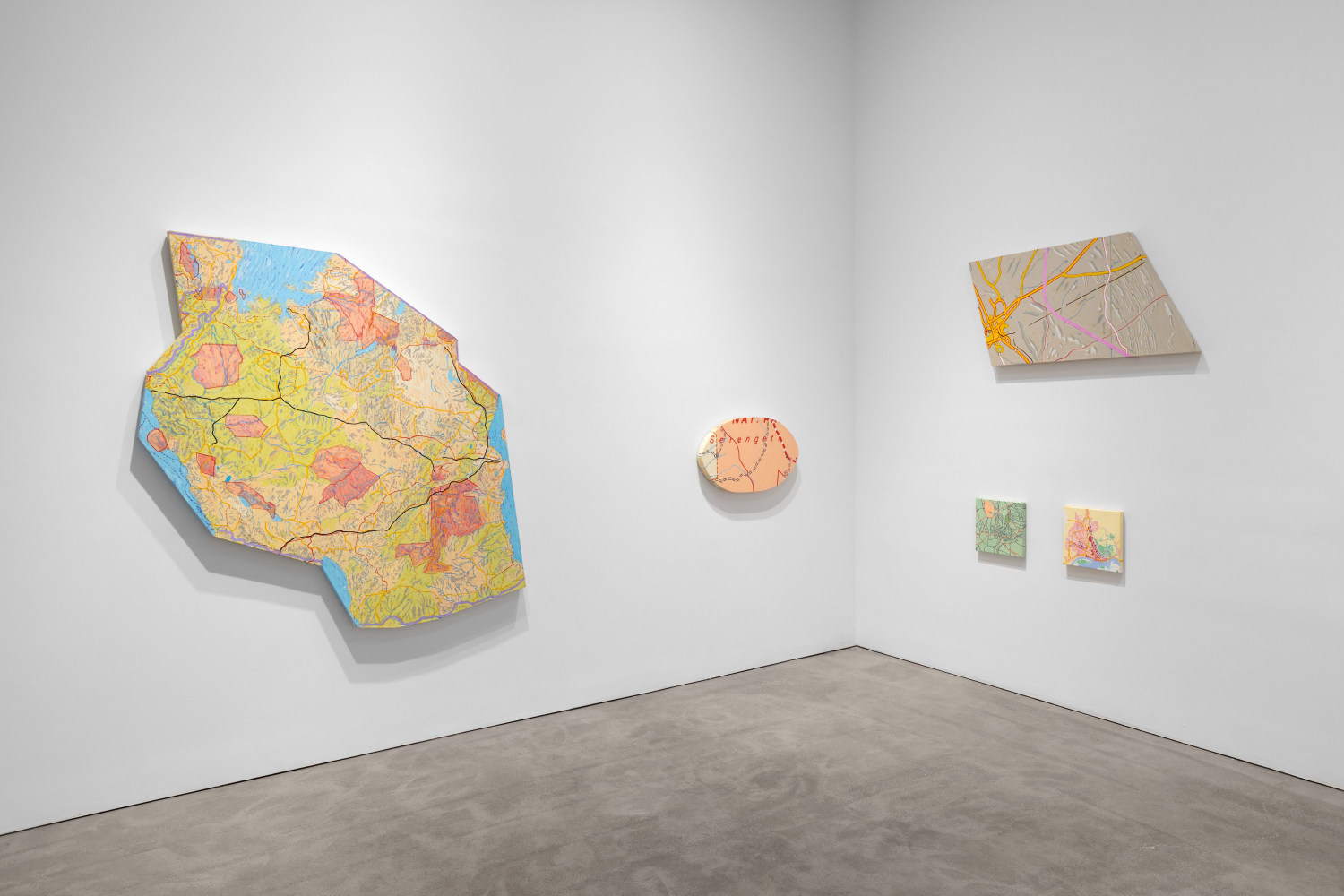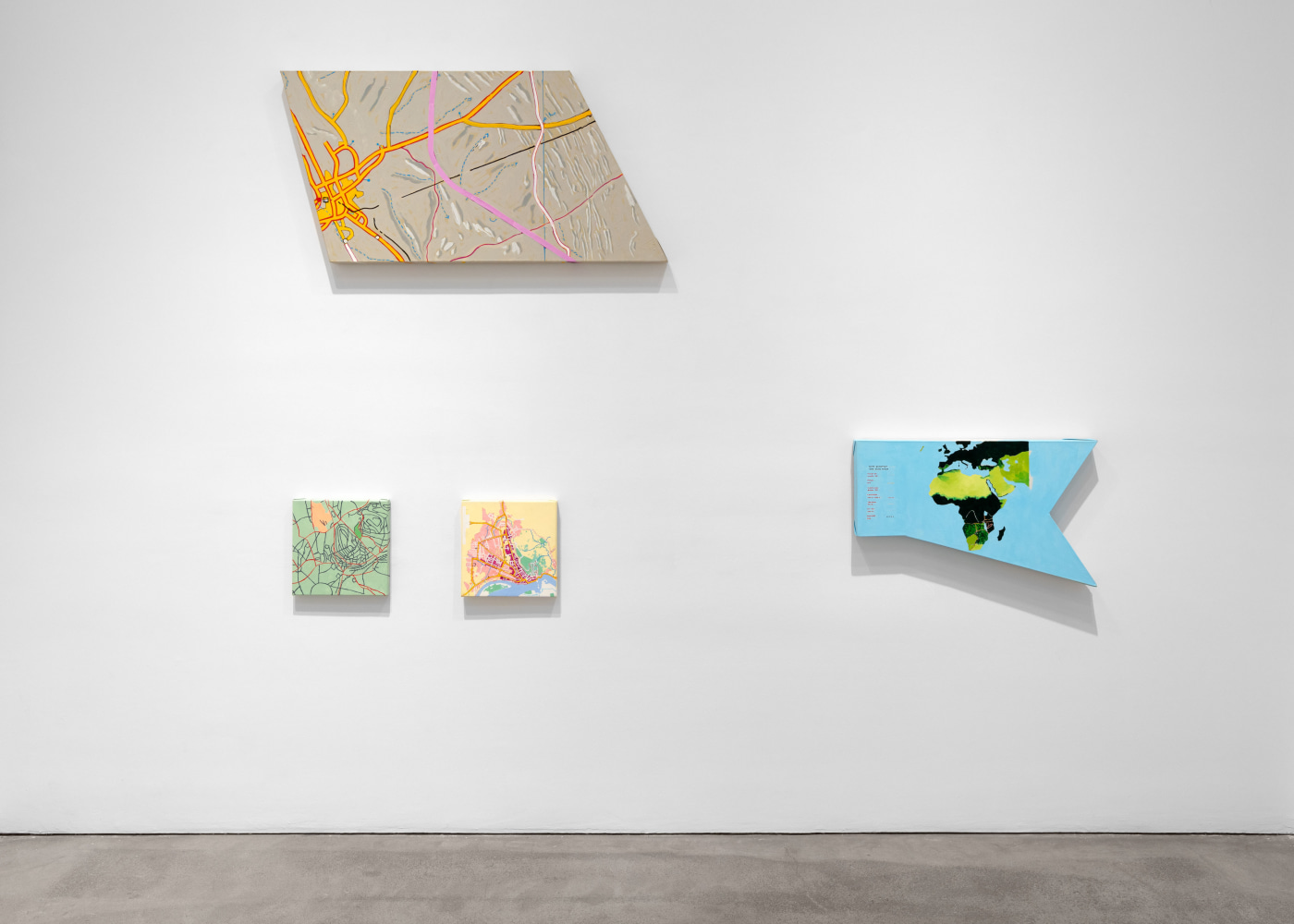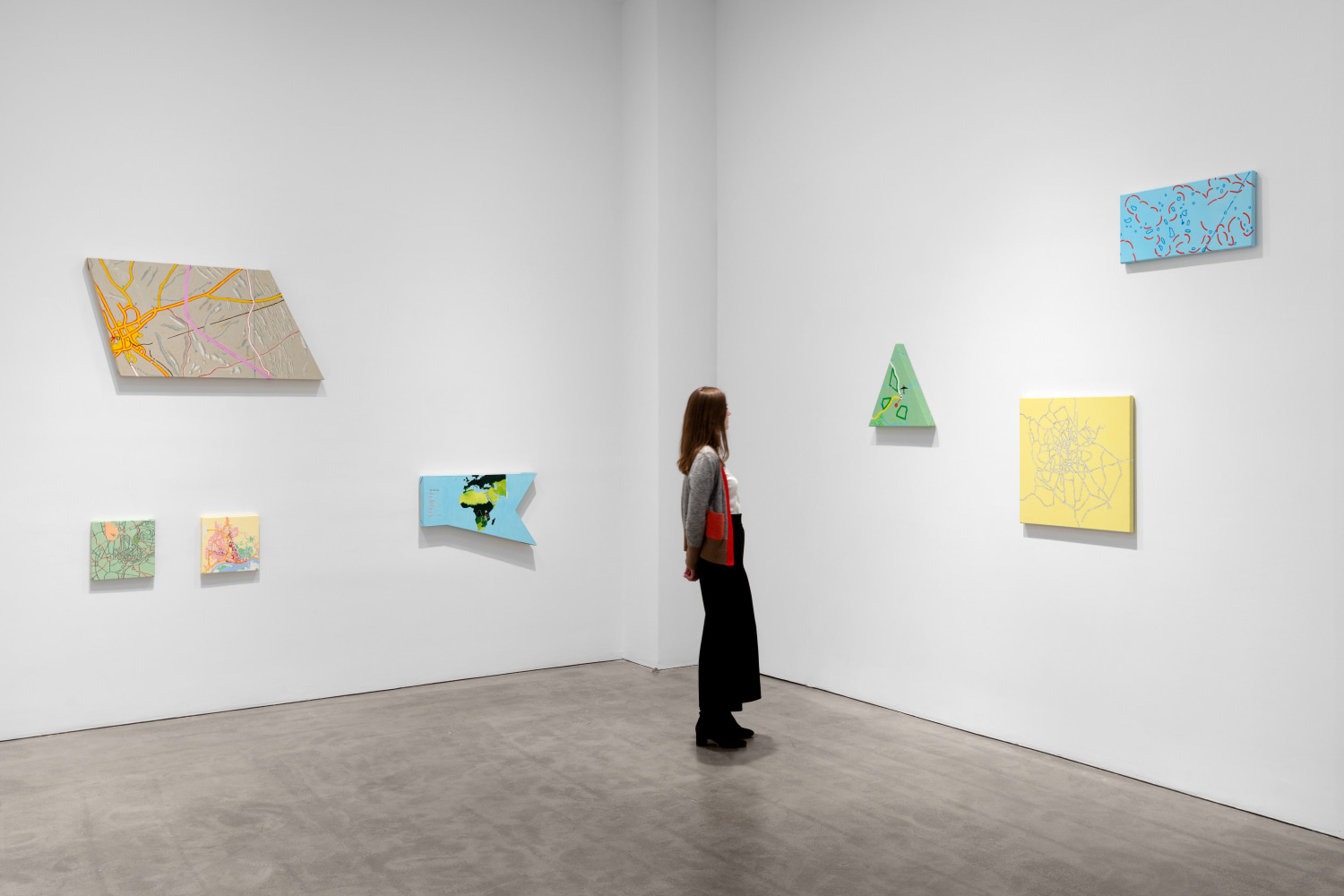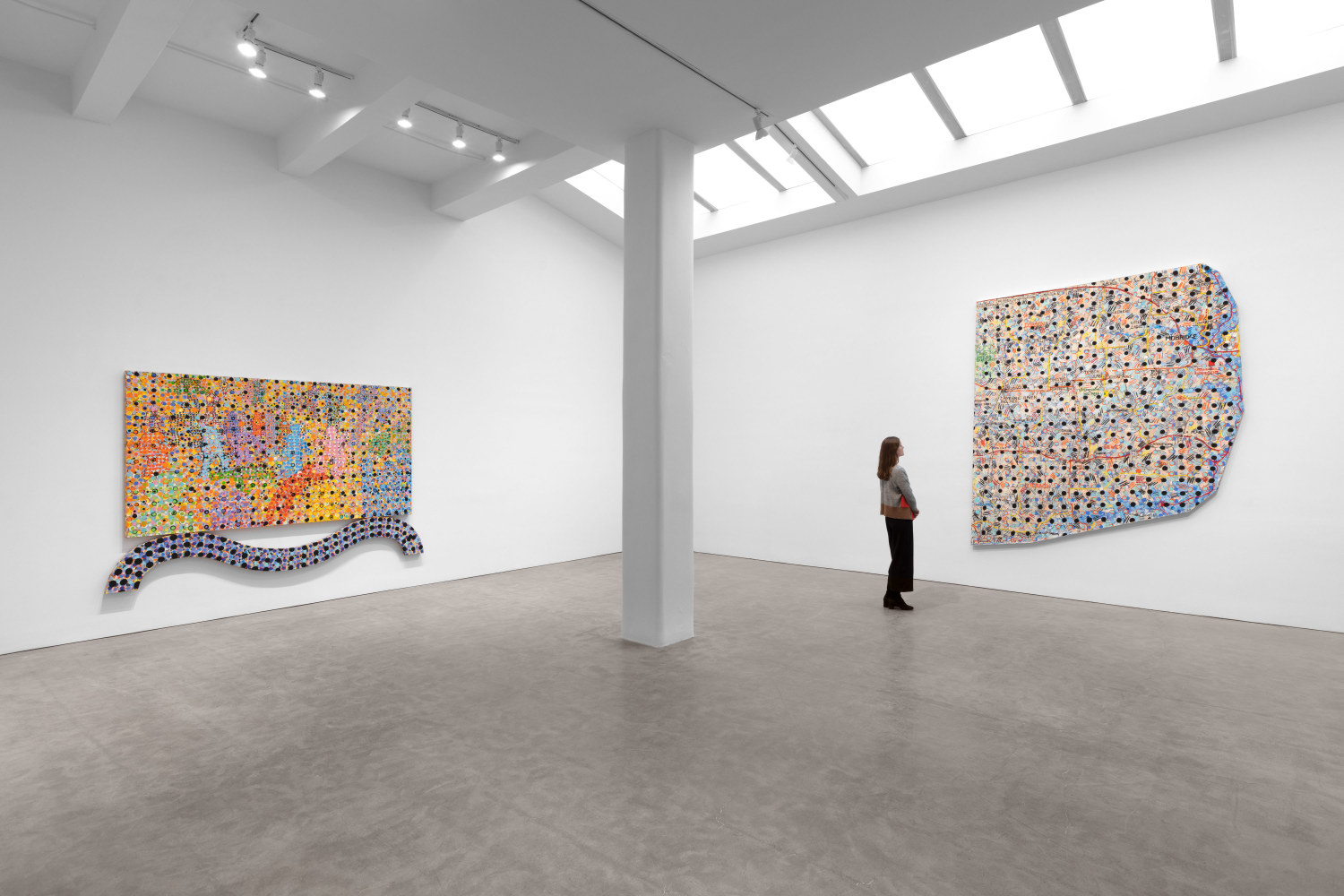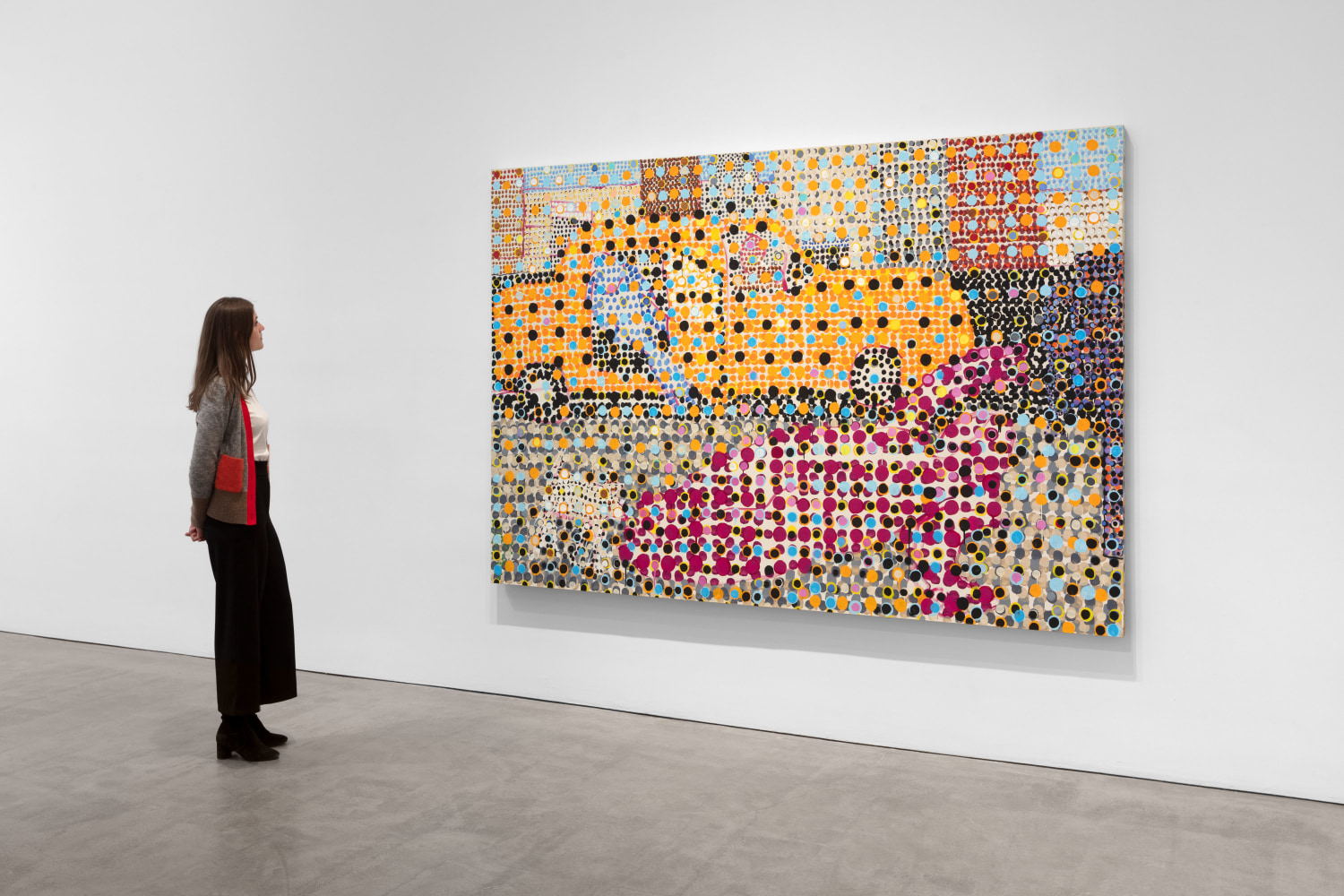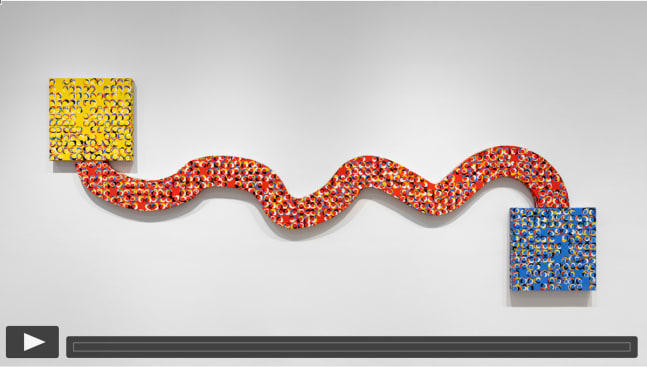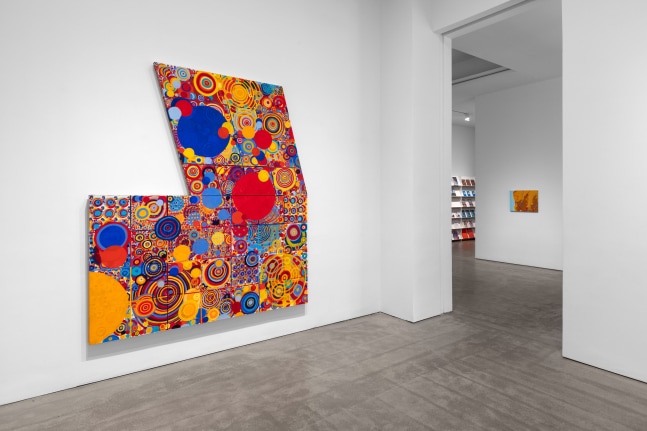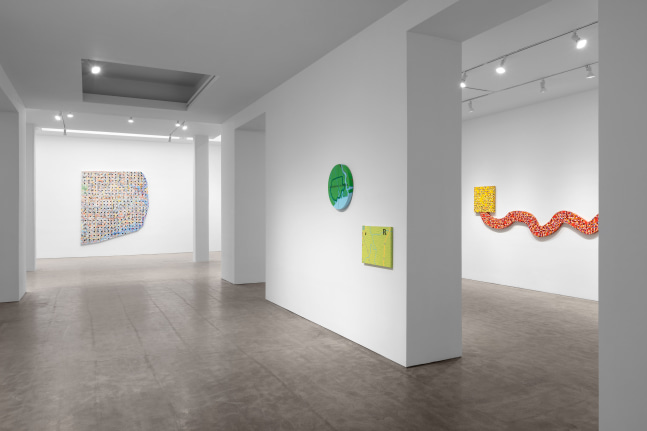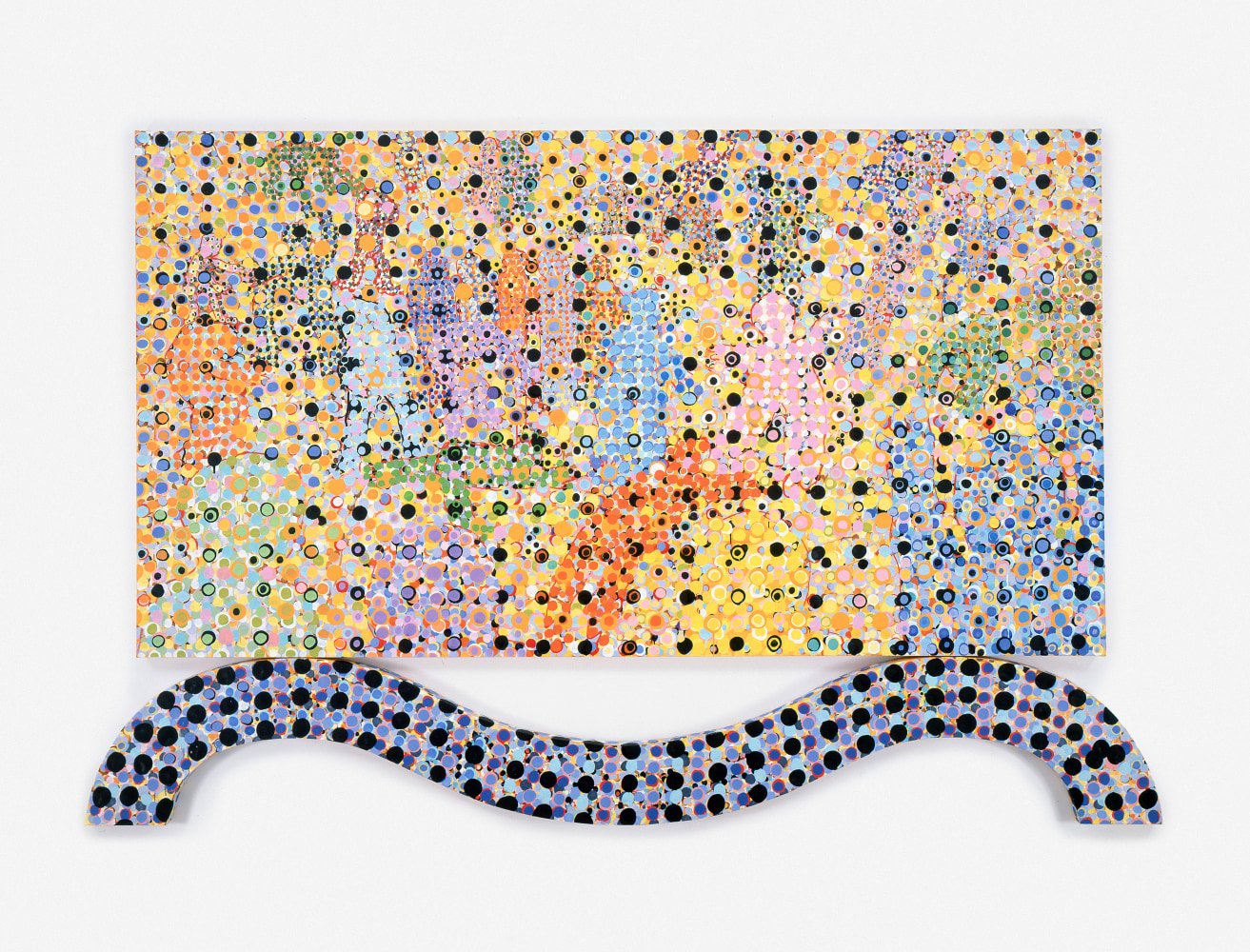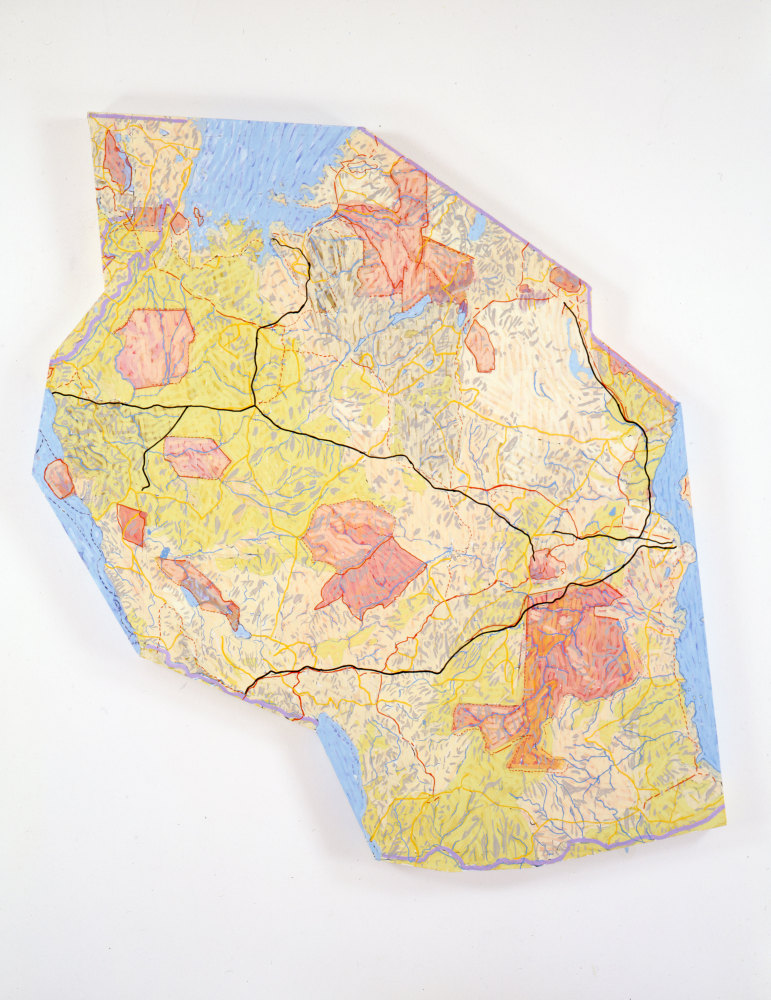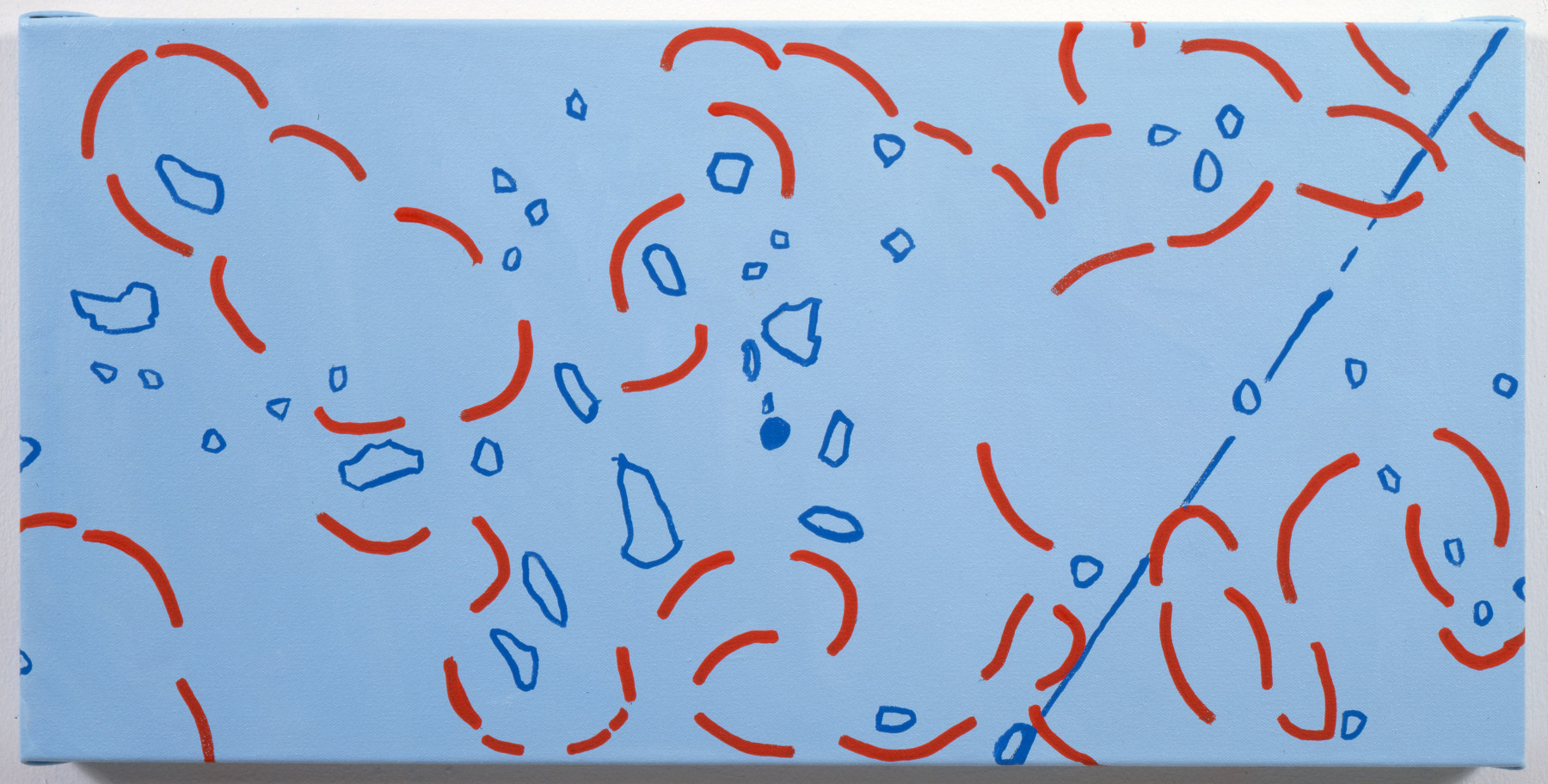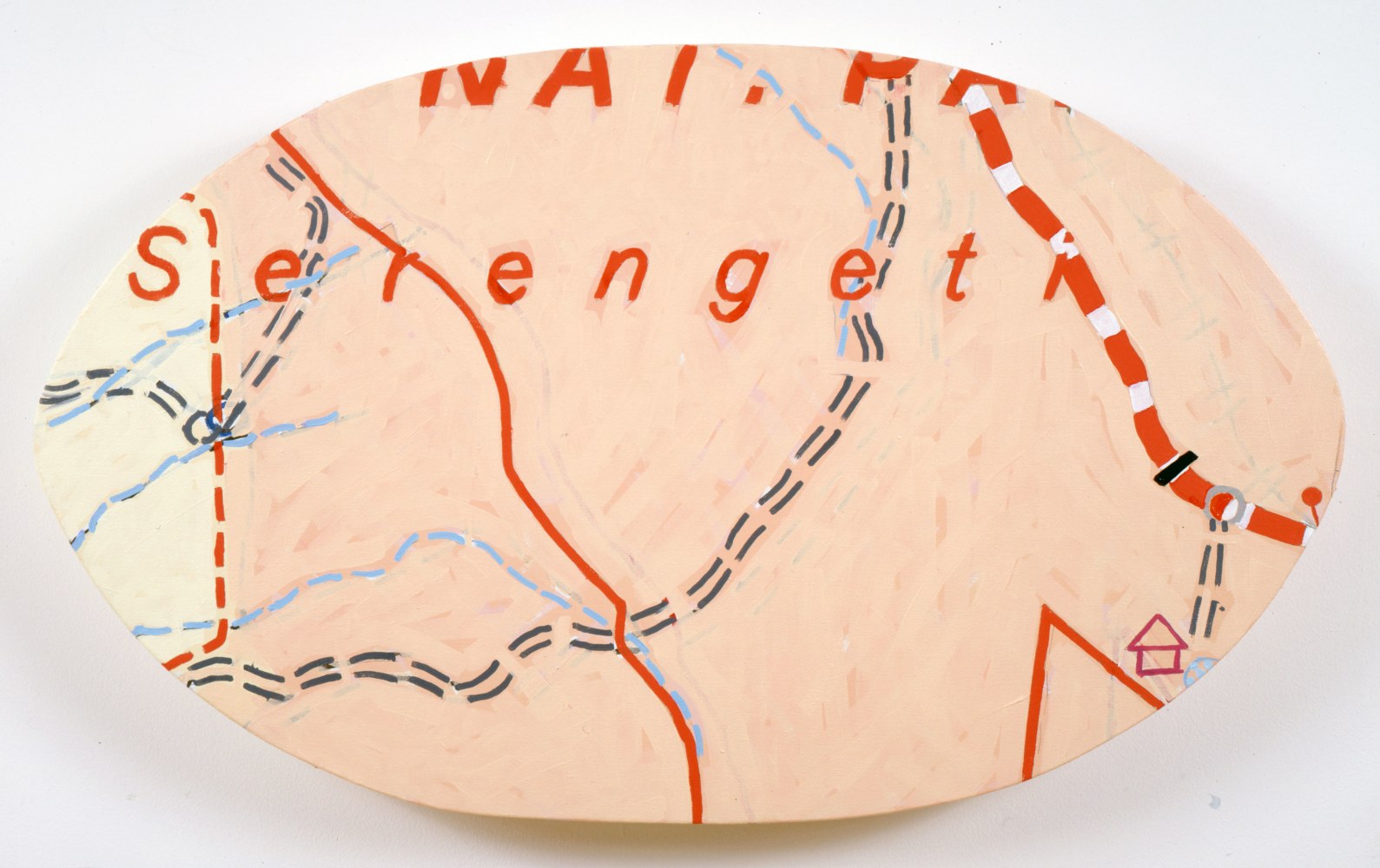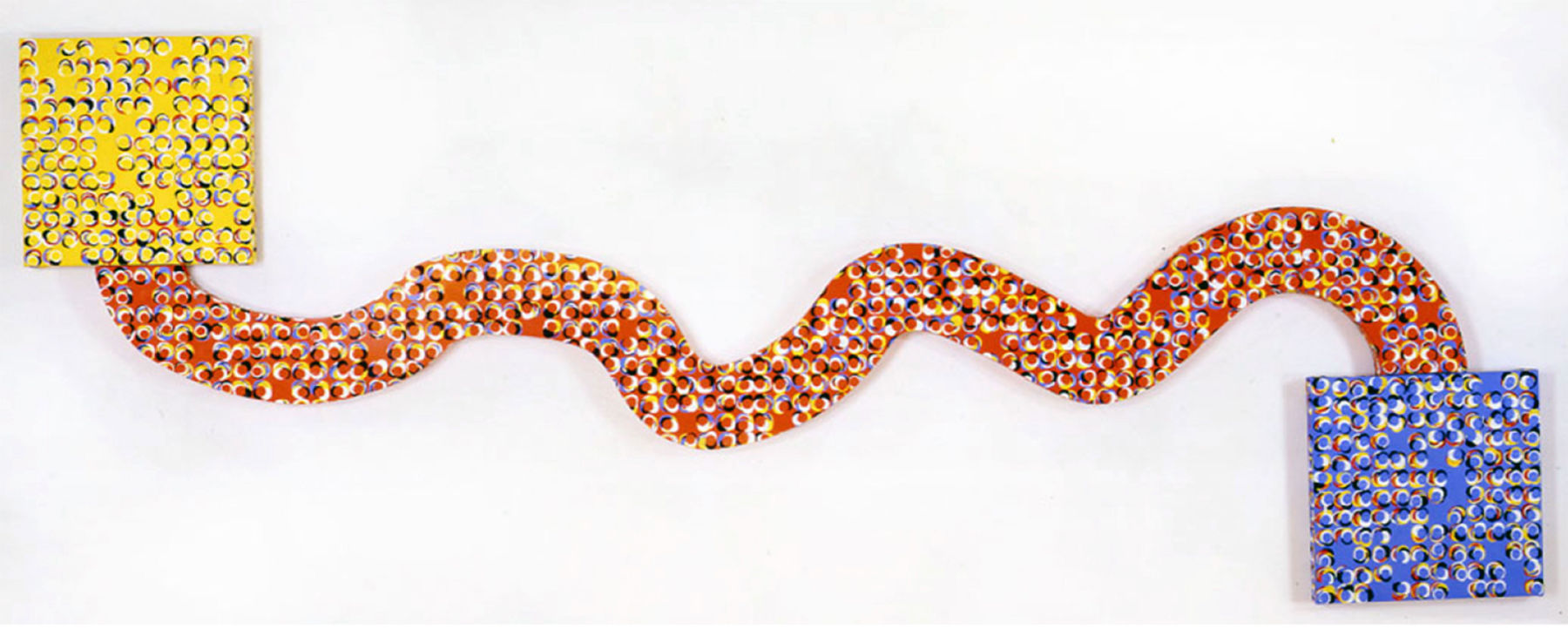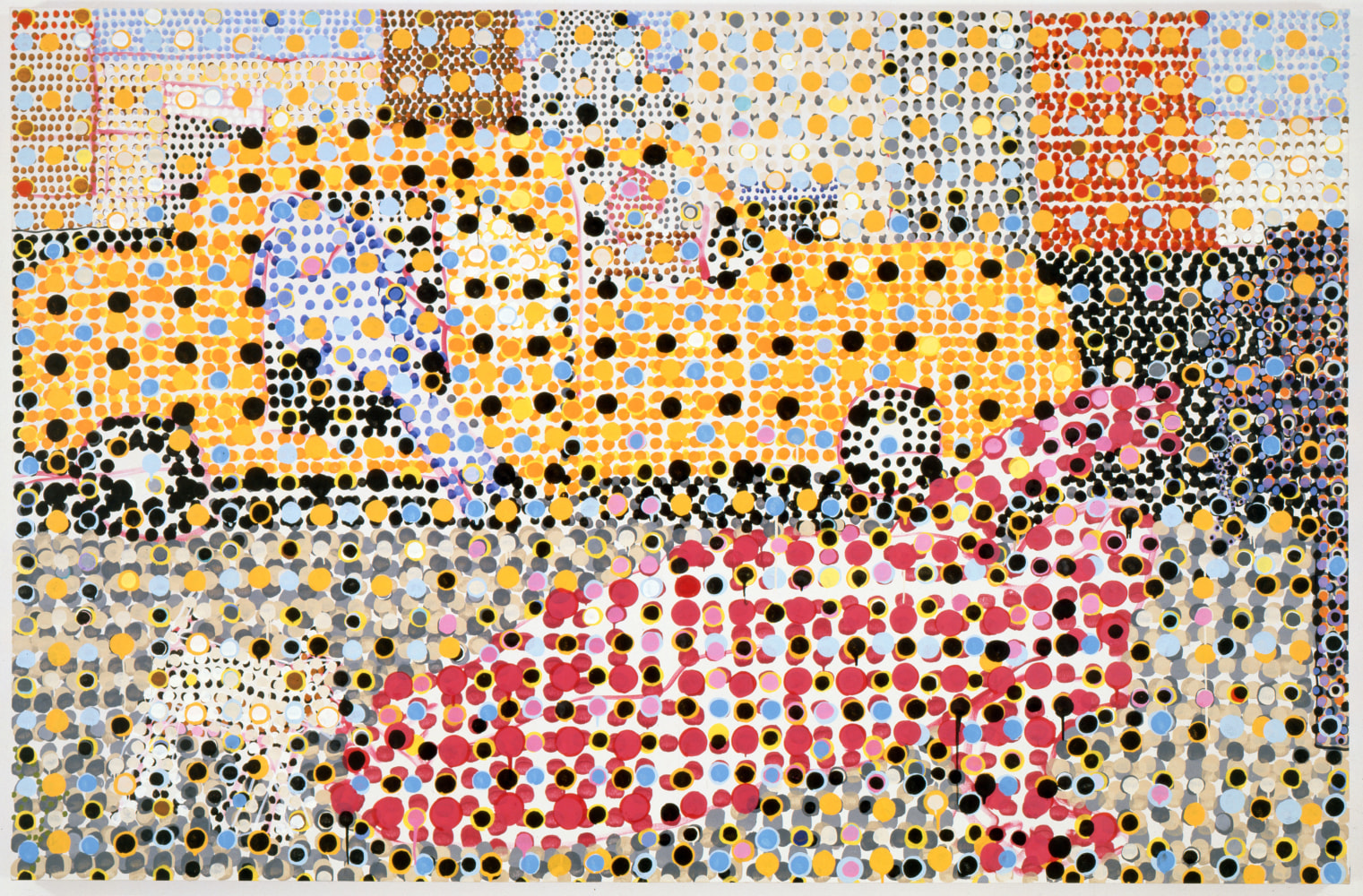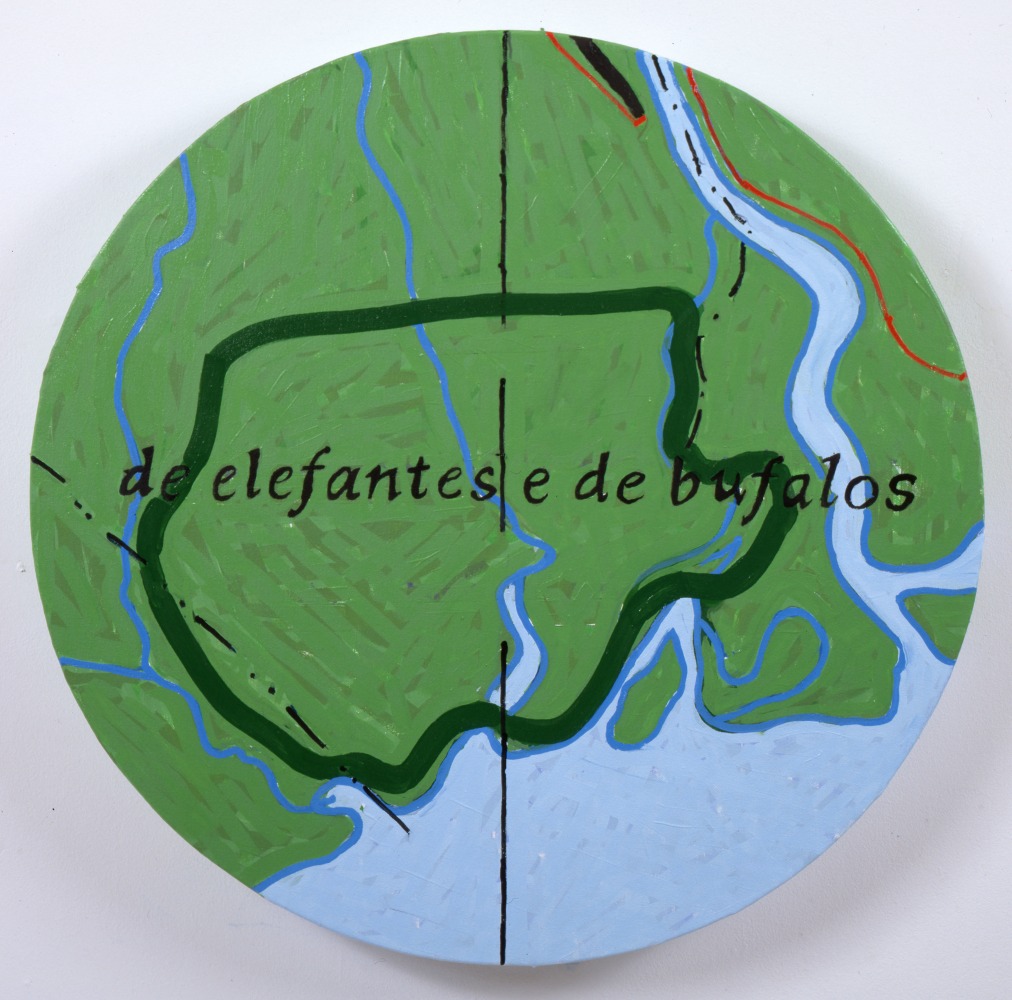A sense of place permeates the work of Jennifer Bartlett. From the specific homes and gardens of friends and family, to such universal natural phenomena as the ocean, each new site presents challenges through which to explore the boundaries of her chosen medium. In a group of paintings from the early 2000s that interpret printed maps, Bartlett brings a new cultural and geographical specificity to her exploration of place. By altering and abstracting cartographic conventions, the familiar motifs embedded within are revealed.
Maps hold obvious appeal to Bartlett, who has long been guided by the formal organizational structure of the grid and often worked according to a self-imposed methodological rubric. Interested in the map’s total claim to objectivity, Bartlett has manipulated cartographic representations of countries in Africa and the Middle East that she has not visited, thus avoiding personal associations and enhancing the arbitrary in the topographic signs. On large canvases shaped to mirror the borders of the nations they contain, Bartlett creates contours through the layering of organized marks before tracing a network of intersecting lines indicating roads, rivers, and internal borders across the complex surfaces. By shifting these geographical markers for aesthetic purposes, allowing natural and human-built routes to take unexpected turns, Bartlett questions the presumed objectivity of her source materials, in particular those that claim to depict disputed terrains. In a series of smaller canvases, selected geographic details are freed from the distinctive containers of their national outlines to become places of Bartlett’s own making. The topographical signs have been alternately transformed into painterly abstractions or familiar motifs. Goba, Ethiopia, for example, includes shapes and symbols that have populated Bartlett’s work since the 1970s: the house and the mountain, the triangle and the circle.
Also in the early 2000s, Bartlett released the dots from their organizational structure and began building them into dense compositions. Across dazzlingly colorful canvases of irregular shapes and sizes, dots large and small vibrate with energy, occasionally expanding into rings of mesmerizing concentric circles. Using her painterly repertoire in unexpected ways, Bartlett literally and metaphorically explores new territory while expanding her visual vocabulary along the way.
Jennifer Bartlett (b. 1941, Long Beach, California) studied at Mills College and received her MFA from Yale University in 1965. By the mid-1970s, Bartlett had emerged as a leading American artist of her time—particularly following the landmark presentation at Paula Cooper Gallery of Rhapsody (1976), Bartlett’s magnum opus, now in the collection of the Museum of Modern Art, New York. Bartlett’s first survey exhibition was held in 1985 at the Walker Art Center, Minneapolis and traveled to the Brooklyn Museum, New York and the Carnegie Museum of Art, Philadelphia, among others. In 2006, the Addison Gallery of American Art surveyed Bartlett’s early enameled steel plate paintings in the period from 1968–76. In 2013-14, Klaus Ottmann curated her second traveling survey “Jennifer Bartlett: History of the Universe—Works 1970–2011,” which visited the Pennsylvania Academy of the Fine Arts and the Parrish Art Museum, New York. In 2014, the Cleveland Museum of Art united her three monumental plate pieces, Rhapsody, Song, and Recitative in the exhibition “Epic Systems.” Bartlett’s works are represented extensively in collections in the US and abroad including the Hirshhorn Museum and Sculpture Garden, Washington, DC; the Israel Museum, Jerusalem; the Los Angeles County Museum of Art; the Naoshima Museum in Japan; the Metropolitan Museum of Art, New York; the Museum of Fine Arts, Houston; the Philadelphia Museum of Art; the San Francisco Museum of Modern Art; the Tate Modern, London; the Whitney Museum of American Art; and the Yale University Art Gallery, New Haven.
For more information, please contact the gallery: (212) 255-1105 or
info@paulacoopergallery.com

